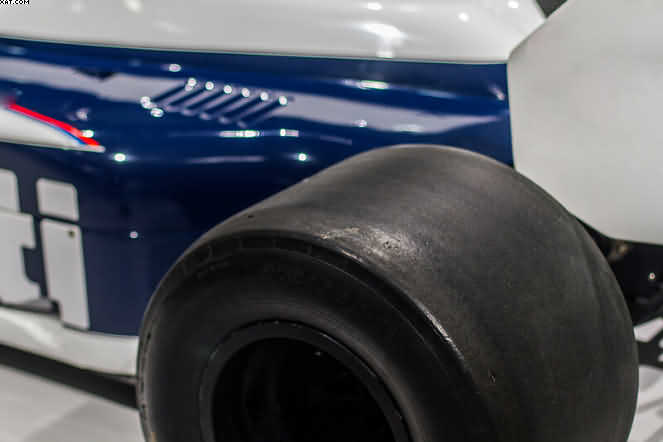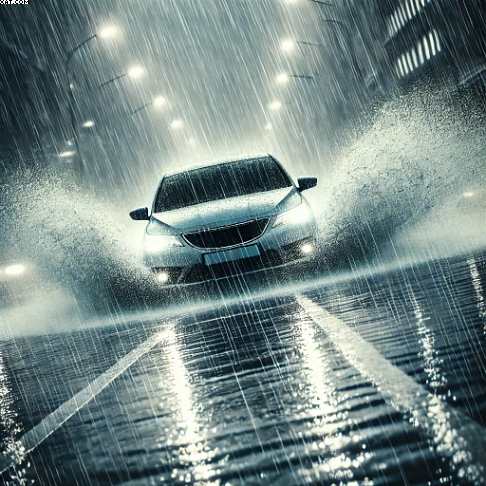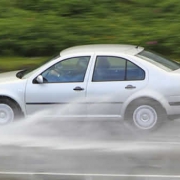AQUAPLANING and Bald Tyres
Table of Contents
AQUAPLANING and Bald Tyres

AQUAPLANING and Bald Tyres
Bald Tyres: Change your tyres at 3 mm to avoid aquaplaning
Managing Halifax’s Wet Roads: Aquaplaning and Bald Tyres
Greetings, fellow citizens of Halifax! Rainy weather, the horror of treadless tyres and aquaplaning, and other everyday tribulations are topics that are near and dear to our hearts and commutes, so let’s talk about them today. The safety of our local roads is at stake, not only a damp road. Without mentioning our neighbourhood tyre specialists at Pellon Tyres, we would be remiss in delving into this topic.
Think about this:
As you make your way through Halifax, the skies decide it’s the best moment to unleash a torrential deluge. The world appears to be dressed in its finest shade of grey, and the roads reflect the light. At that moment, the unsettling feeling of your car seemingly dancing to its own beat sets in. It is my pleasure to introduce you to aquaplaning.
But how does aquaplaning work precisely?
That exhilarating feeling you get when you’re driving through Halifax on a water slide instead of the road because your tyres lose traction because of the water.
Now we can incorporate bald tyres into this scenario. Old, worn-out treads, or bald tyres, aren’t the best choice for driving in the rain. Our cherished local roads are in danger because their weakened grip makes it difficult for them to push away the water.

The bad bits
So, compared to their well-treaded counterparts, bald tyres aren’t very good at dispersing water. Cruising through Halifax or the M62 motorway on a wet day can be quite the experience due to the layer of water trapped between your tyres and the asphalt.
But have no fear; the local tyre champs, Pellon Tyres, have come to rescue the day. Their extensive background and familiarity with Halifax’s specific topography and climate allow them to provide you with the ideal answers to ensure your safety and command.
Tyres made to withstand rain are only one of several options available from Pellon Tyres. They have the perfect tyres to keep you safe on Halifax’s difficult roads, whether it’s raining or there’s an unexpected heavy shower.
However, the safety of our community is more important than making a profit from tyre sales. When you visit Pellon Tyres, you can expect helpful, knowledgeable advice from a staff that takes pleasure in assisting customers in selecting the best tyres for their vehicles.
Ultimately, when it comes to the rainy roads of Halifax
nothing is more dangerous than aquaplaning and bald tyres. However, you may avoid problems by arming yourself with knowledge and purchasing the correct tyres from Pellon Tyres. Keep your tyres in great condition by visiting the reliable local specialists at Pellon Tyres whenever you need advice or new tyres. No matter the weather, let’s stay on the roads of Halifax and keep our cars firmly planted!
As we all know, this has been one of the wettest years here in the UK. I say this because when I was driving along the M62 motorway, I noticed that many parts of the motorway were flooded and had large areas of standing water. On all the carriageways. This meant one thing to me: “AQUAPLANING”.
Unfortunately, we know this in the tyre industry. That many motorists are putting off buying new replacement tyres. All our sales figures are down. So the mixture of bald tyres on these very wet roads is a disaster waiting to happen. As I am writing this blog some motorists will be experiencing aquaplaning when driving along the motorway at speed with no tread left on their tyres, as I say this is a disaster waithttps://www.pellonautocentre.com/tyre-wear/ing to happen and it will happen, “mark my word”
What is aquaplaning on Bald Tyres ?
Of course, aquaplaning is a word that became synonymous with a Goodyear Tyres advert in the 1970s. Now becoming a very important word. Because of our changing climate and faster roads with increasing traffic numbers. Aquaplaning, means that your wheel loses contact with road surface. In affect, due to a thin layer of water between the tyre and the road surface.
The driver loses control of his car very often causing an accident. Certainly, a good tyre with more than 3 mm of remaining tread. Of course, will push the water away as the car drives through the water at speed. Giving good grip and safer driving conditions. All the leading manufacturers design their tyres with aquaplaning (Driving in Wet Weather) as one of the main aspects of design.
Michelin have even developed a system called “the anti-surf system” to enable their products to give maximum grip when going through areas of static water on the roads, this system is built into the Michelin Pilot sports 3. This tyre has also got added shoulder design to help push the water away and help delay the onset of aquaplaning.


